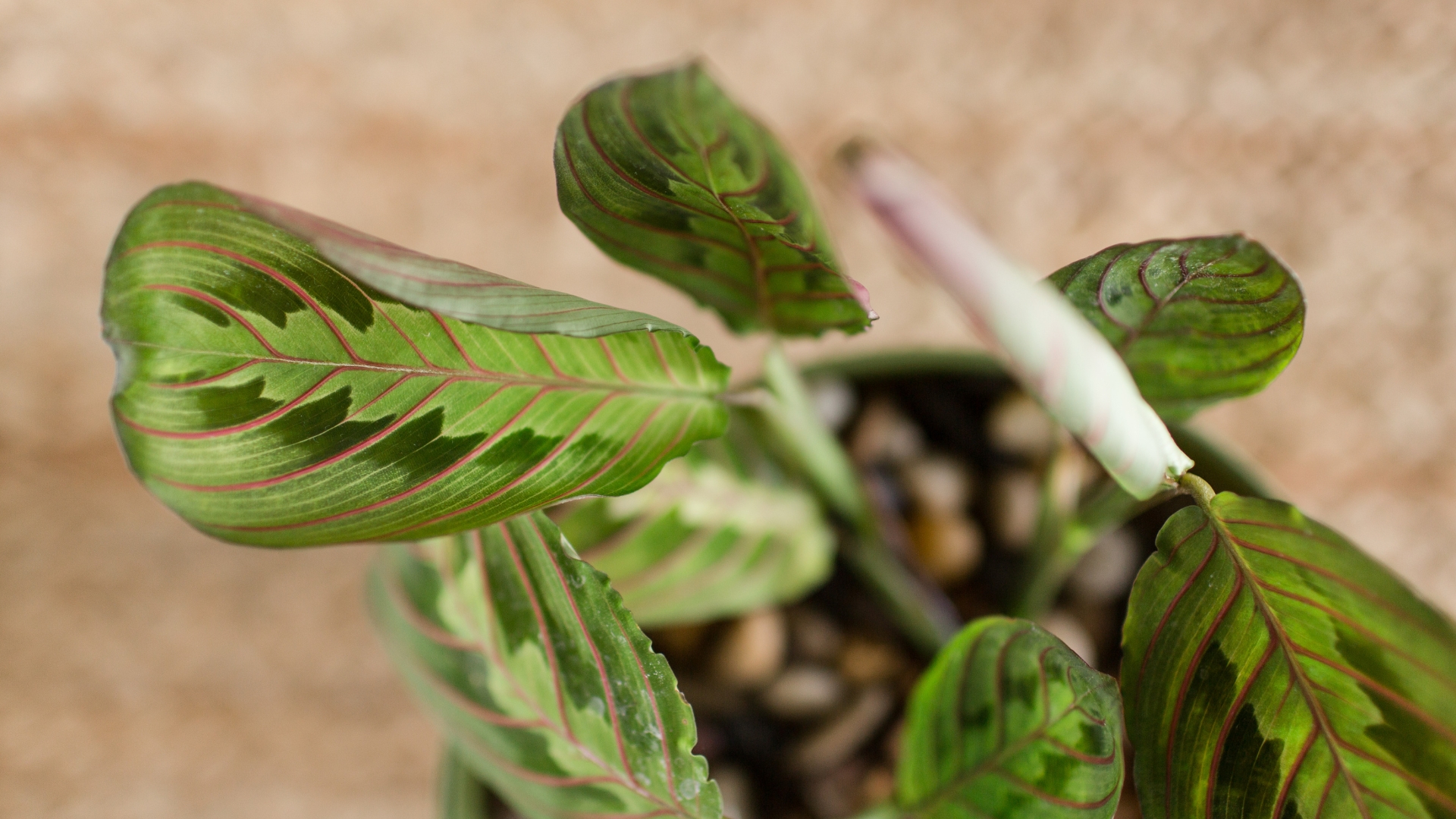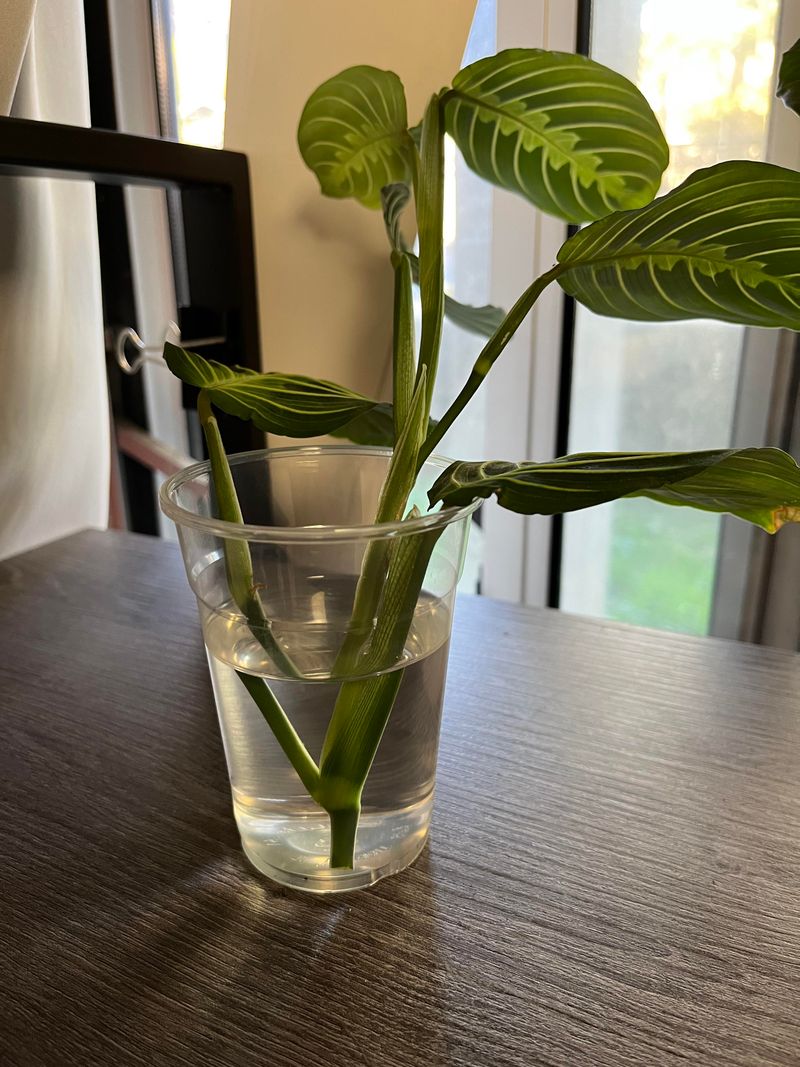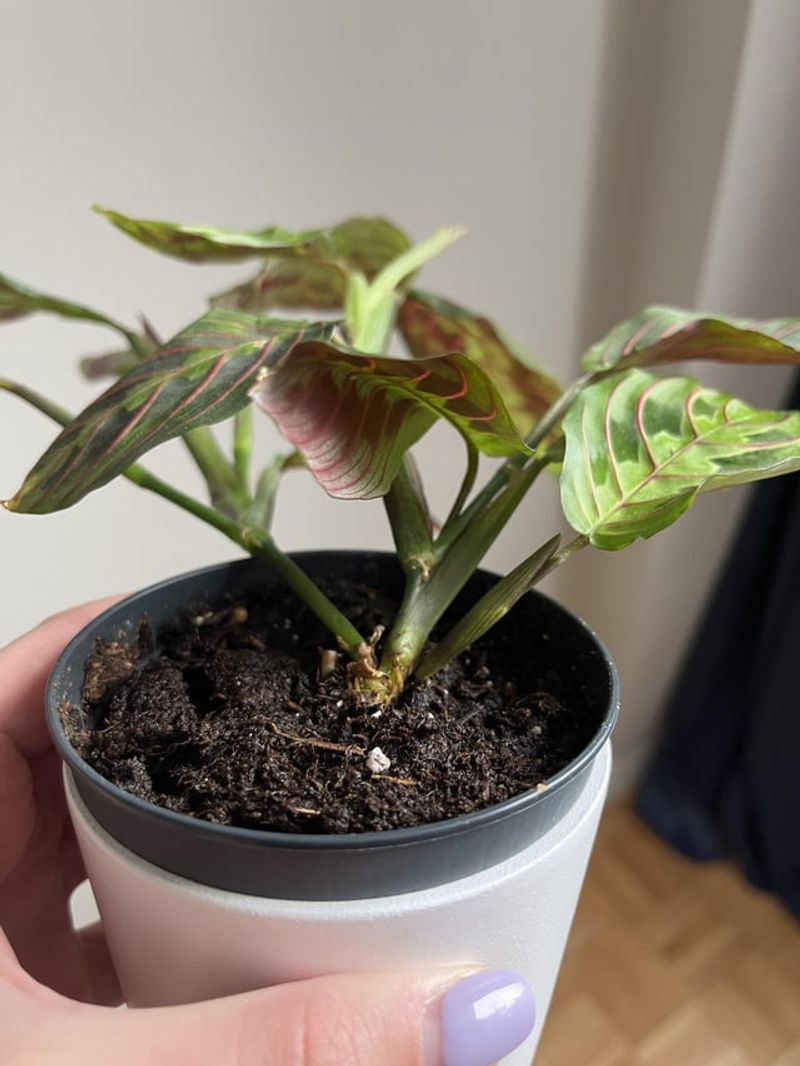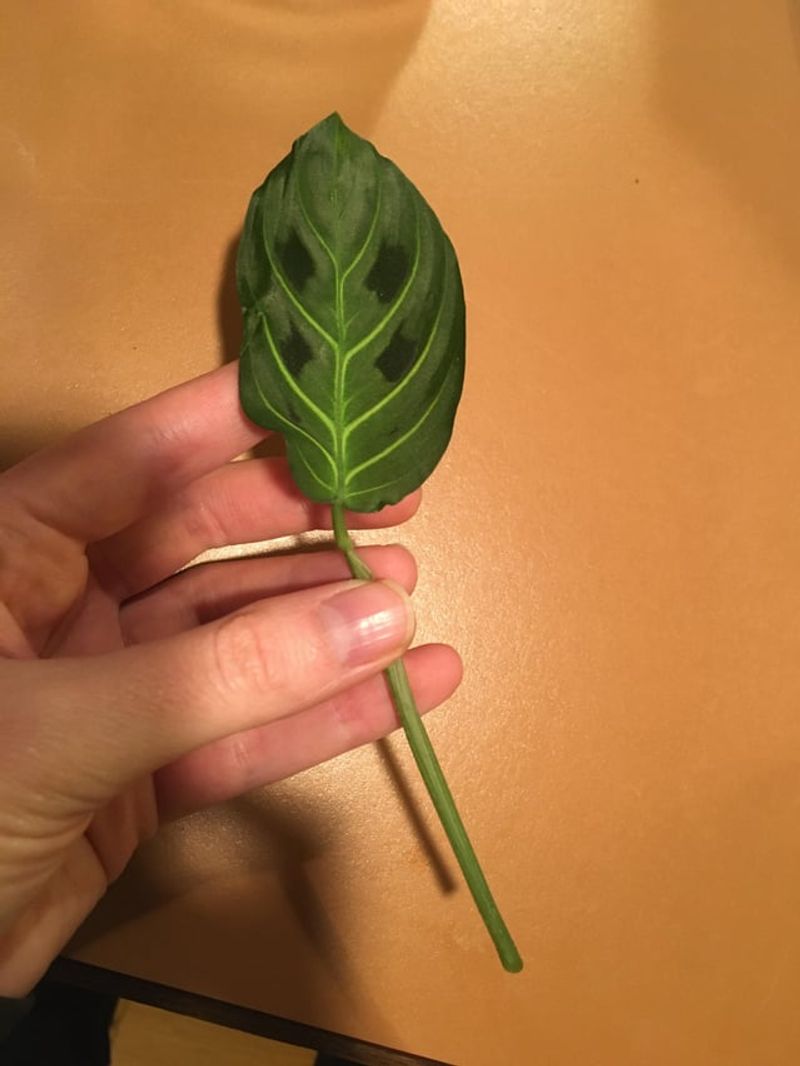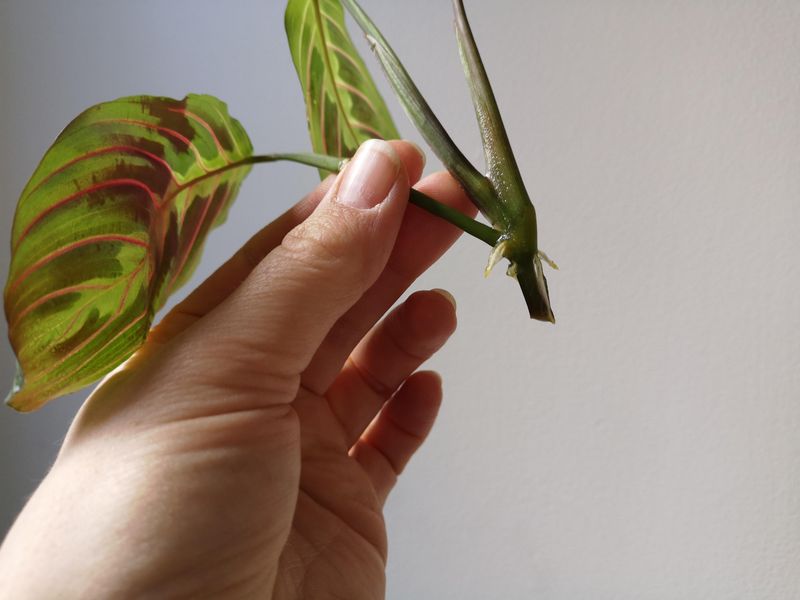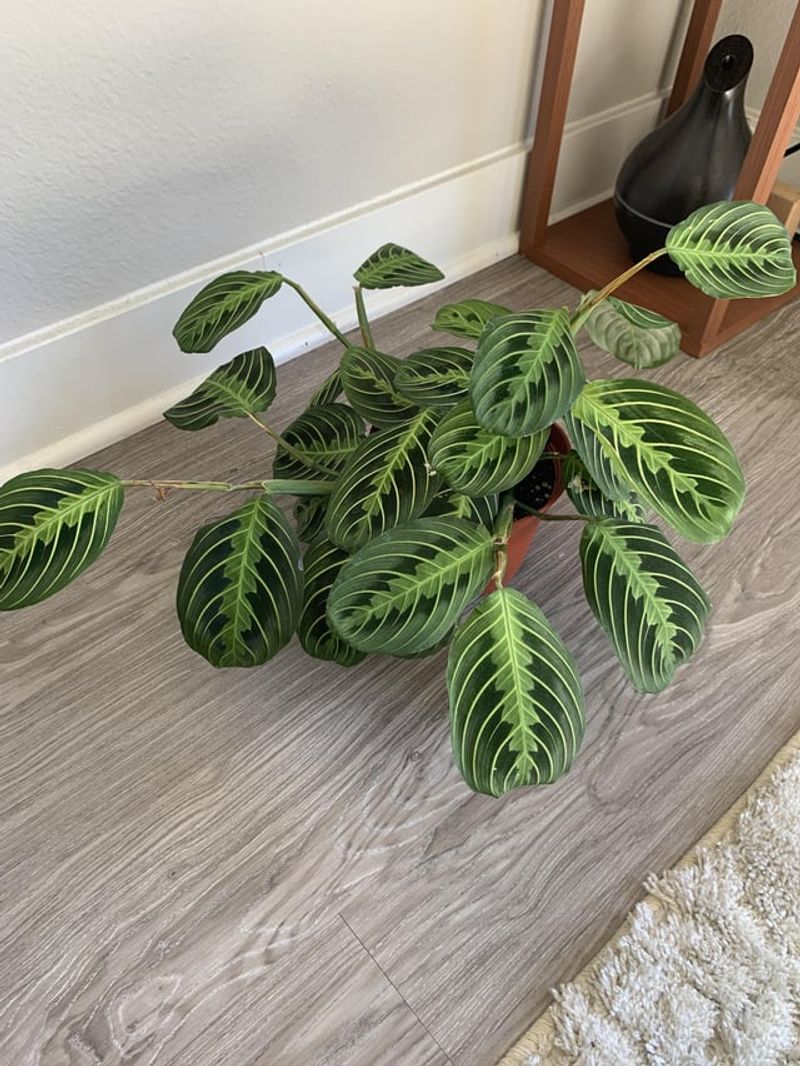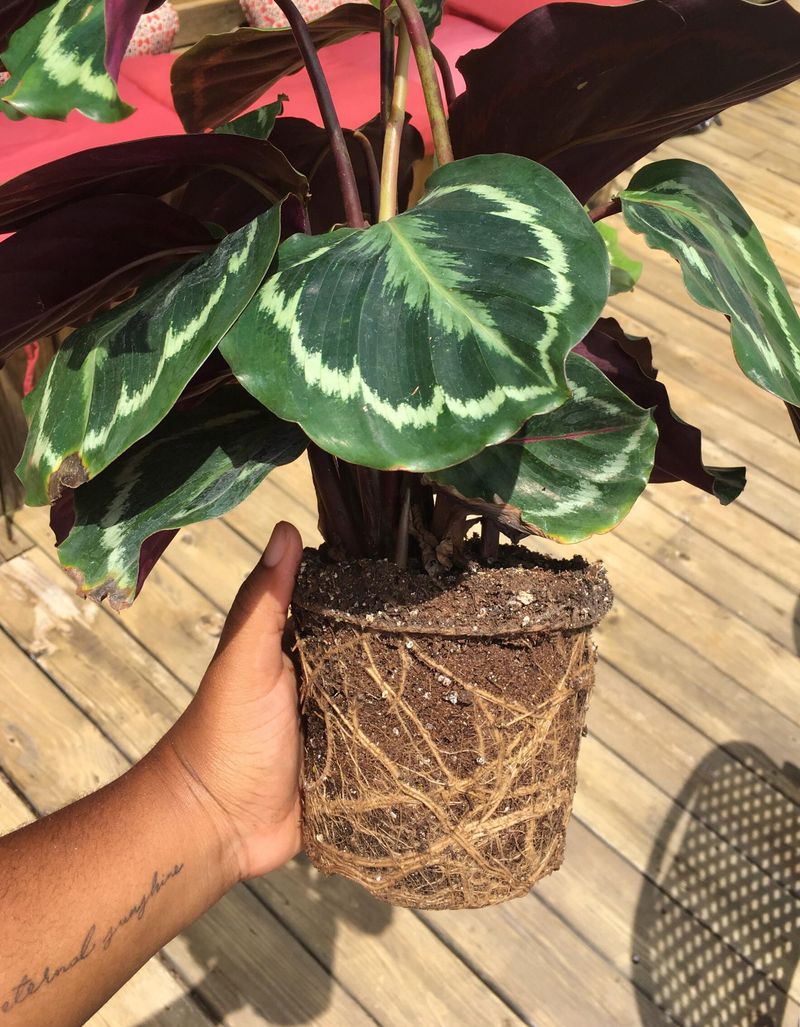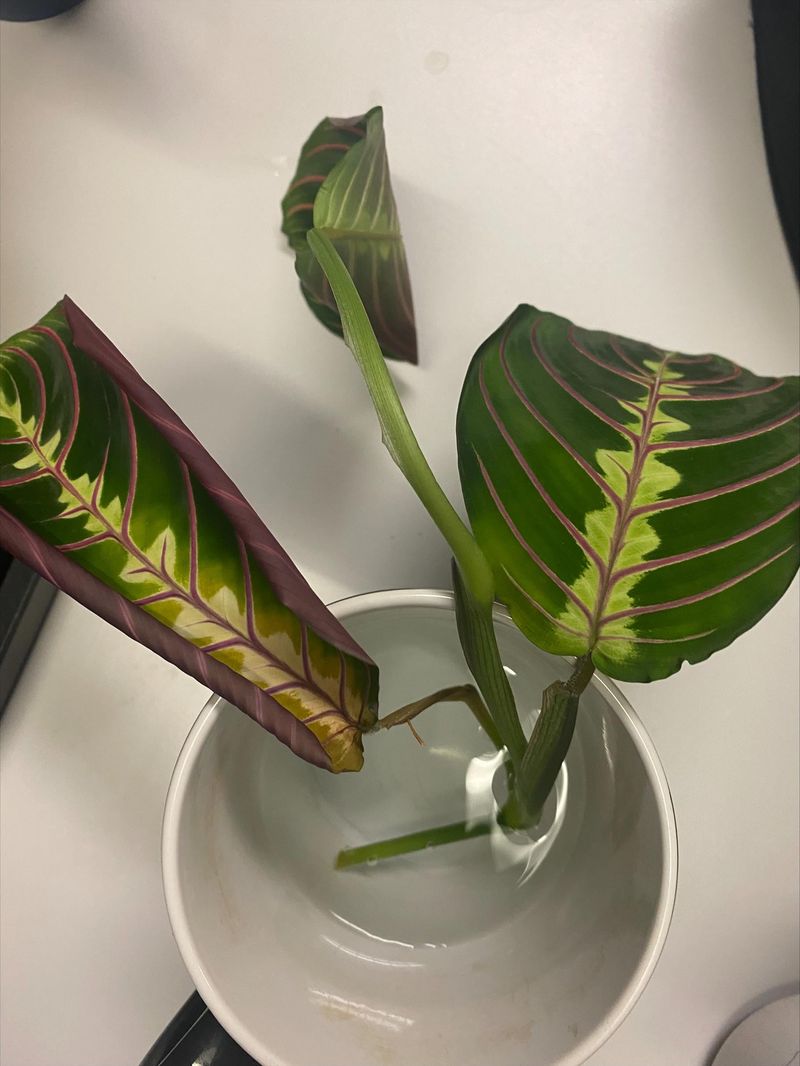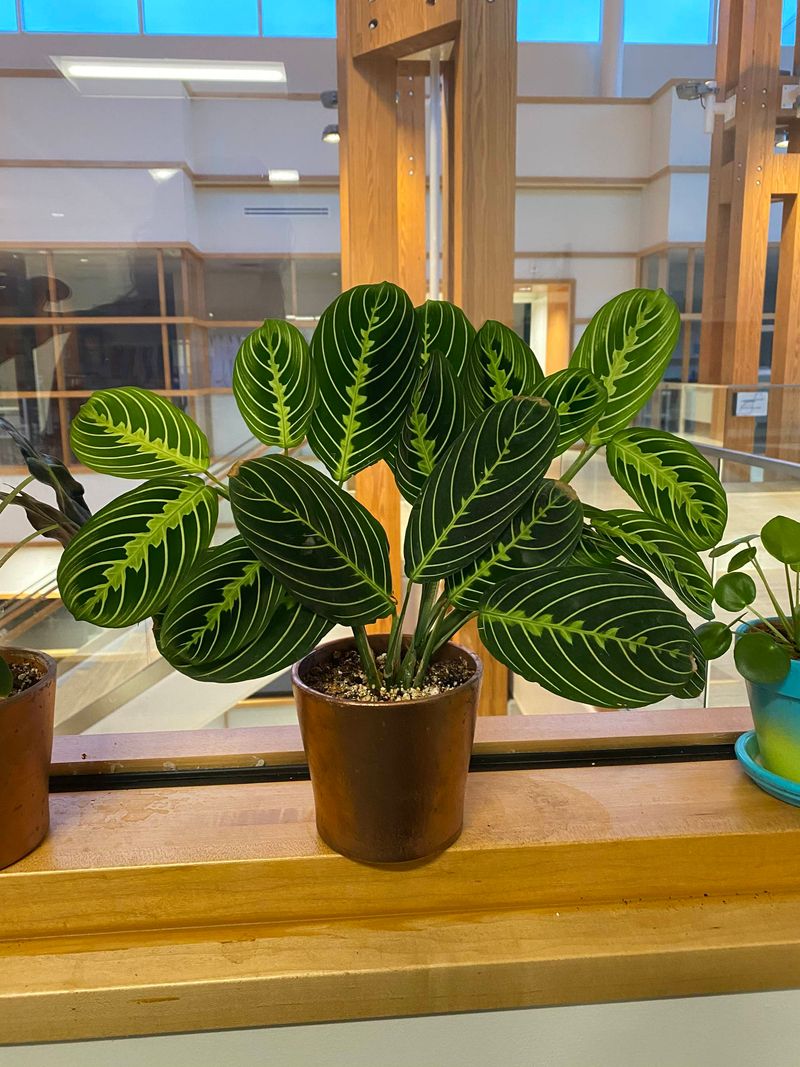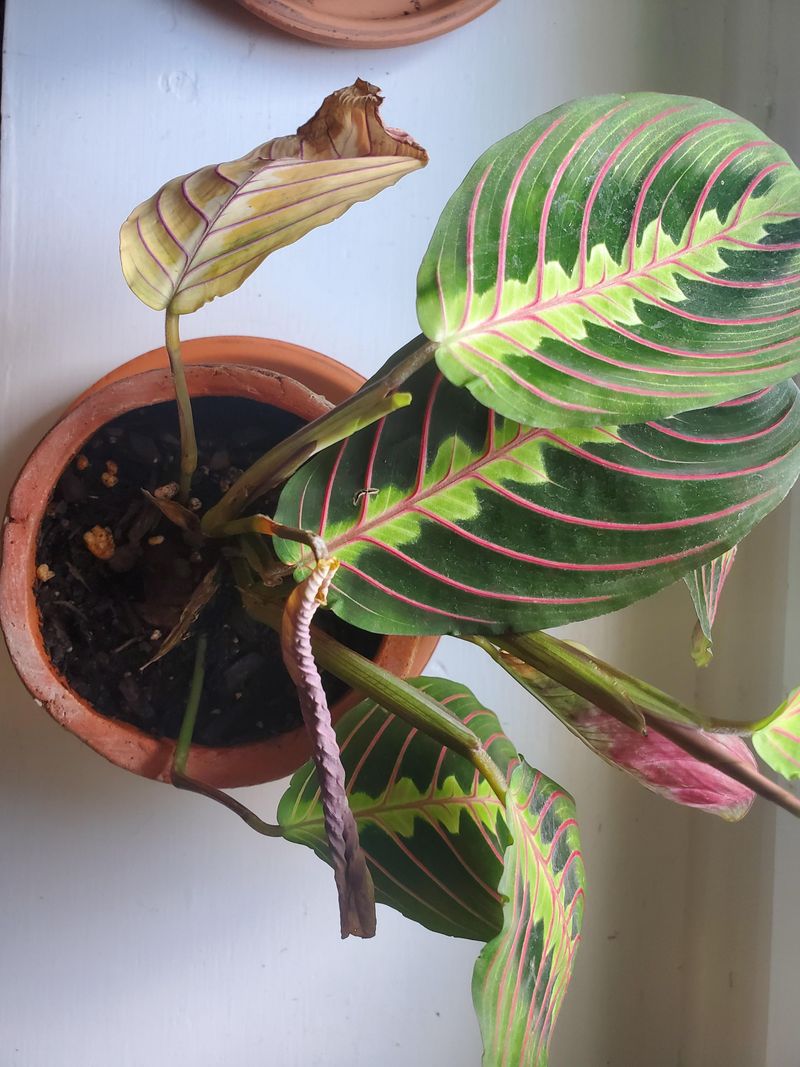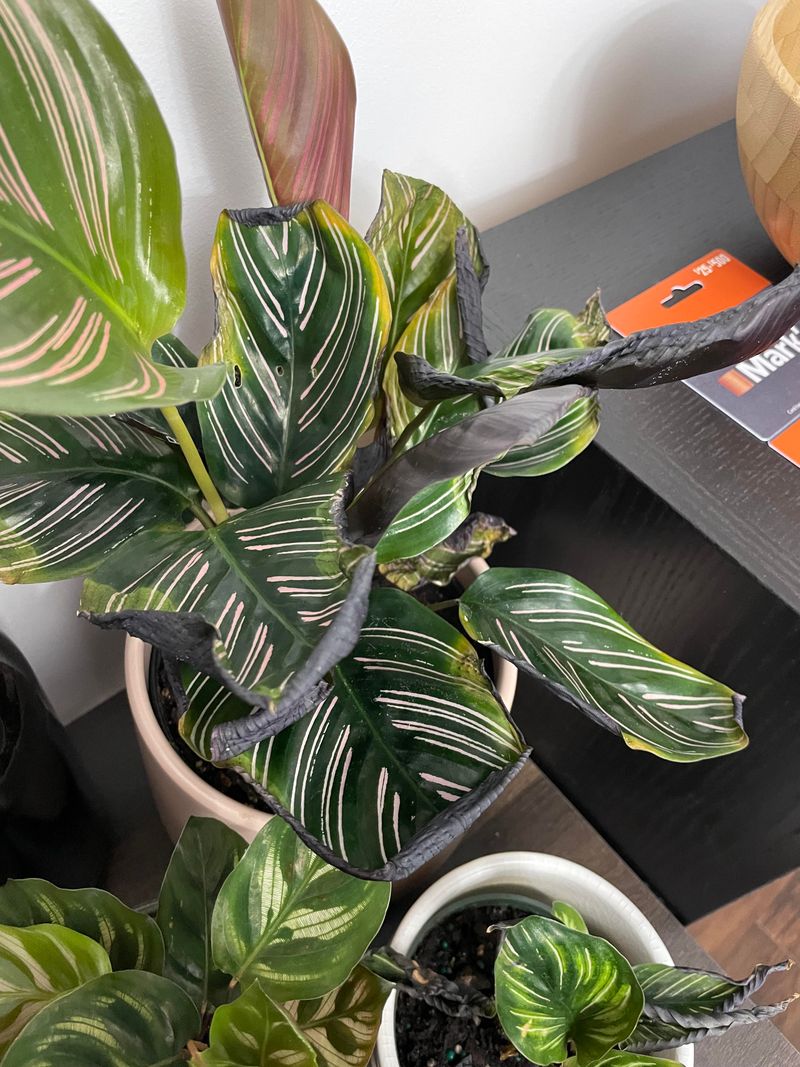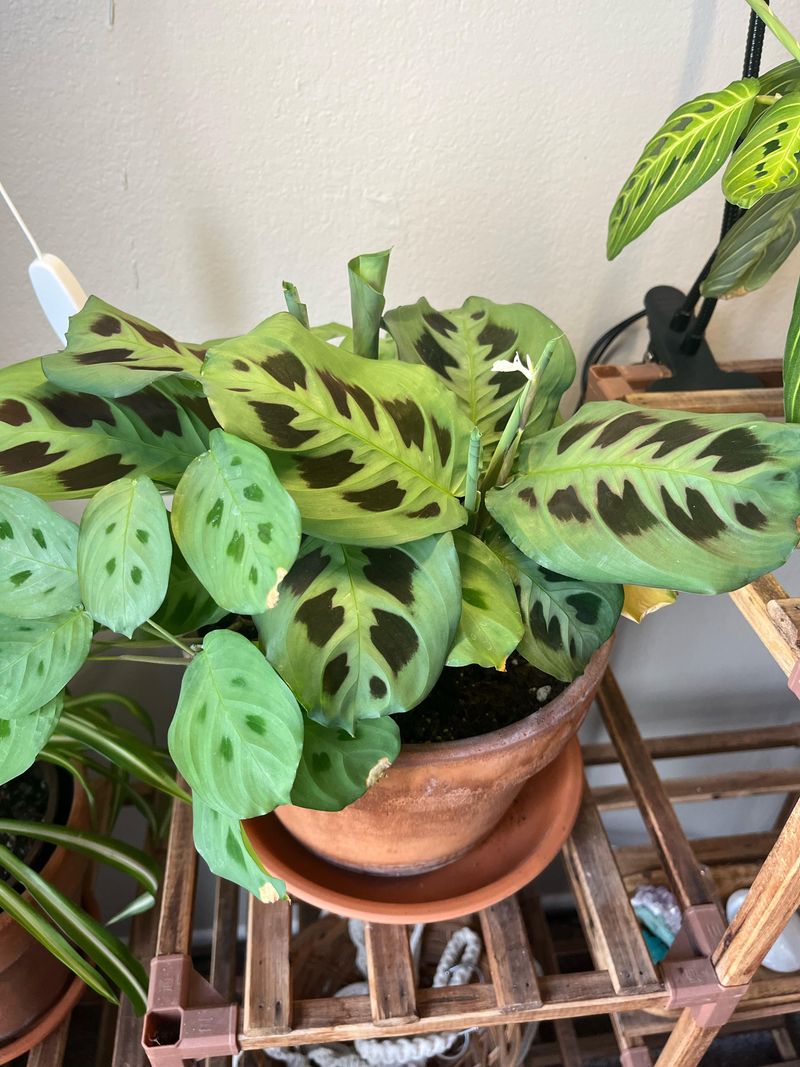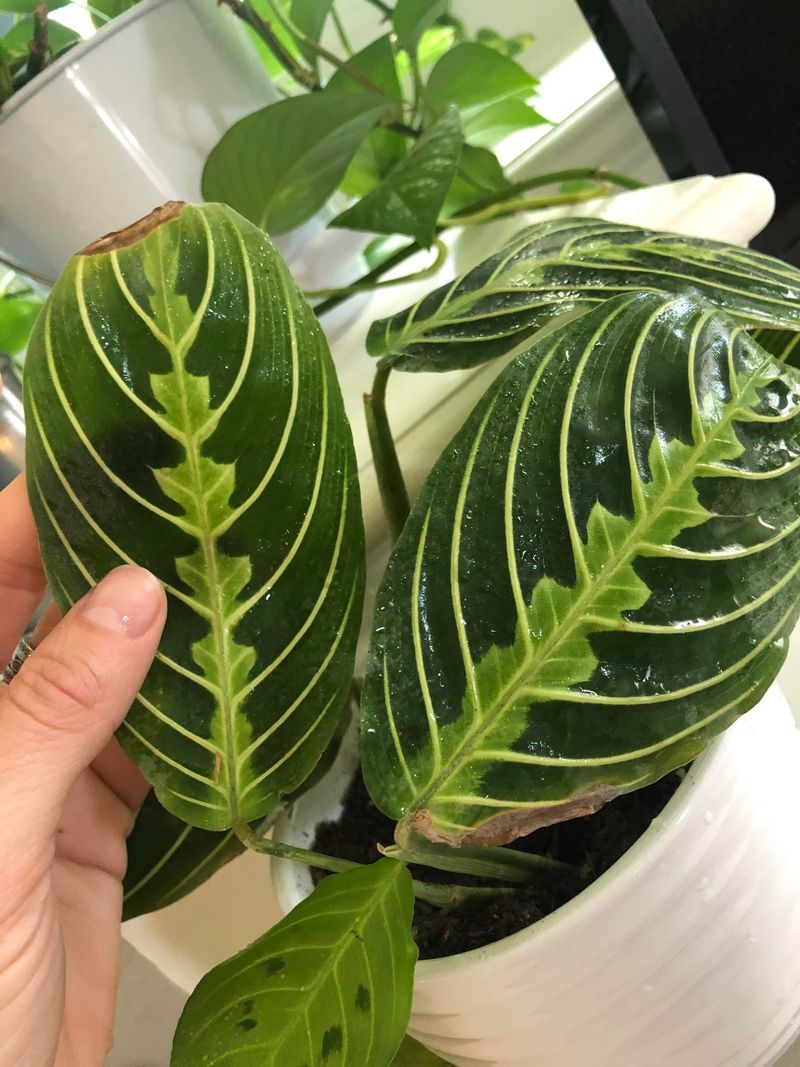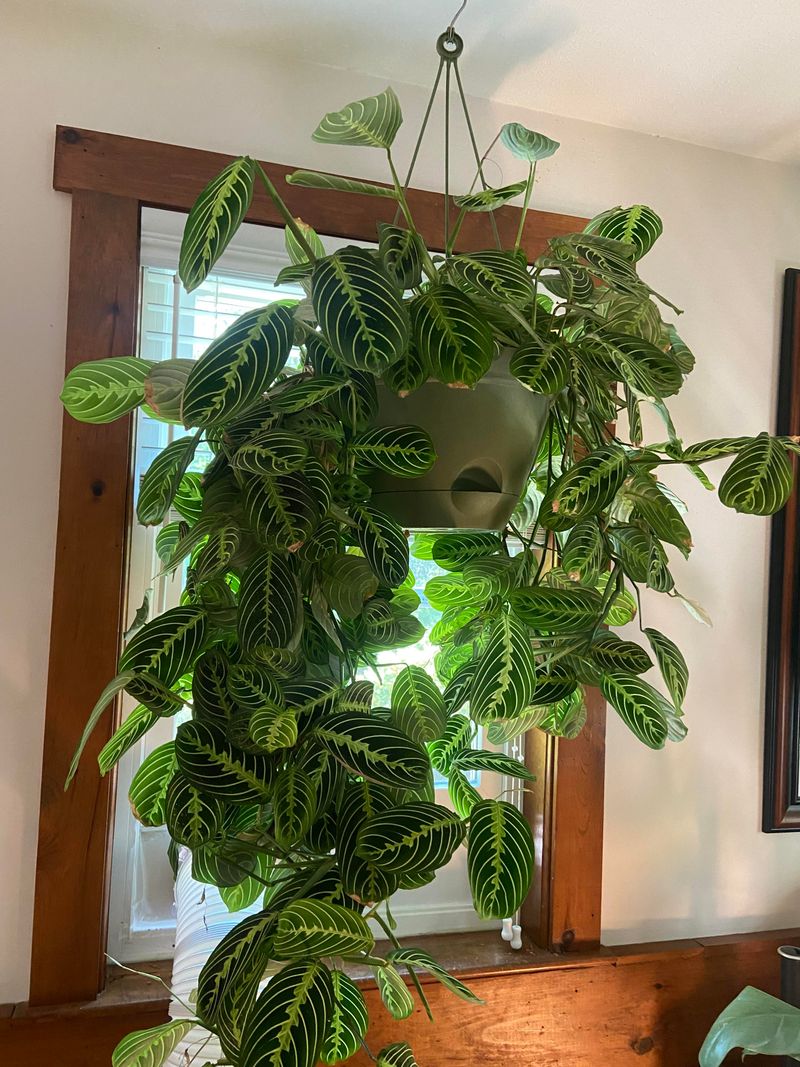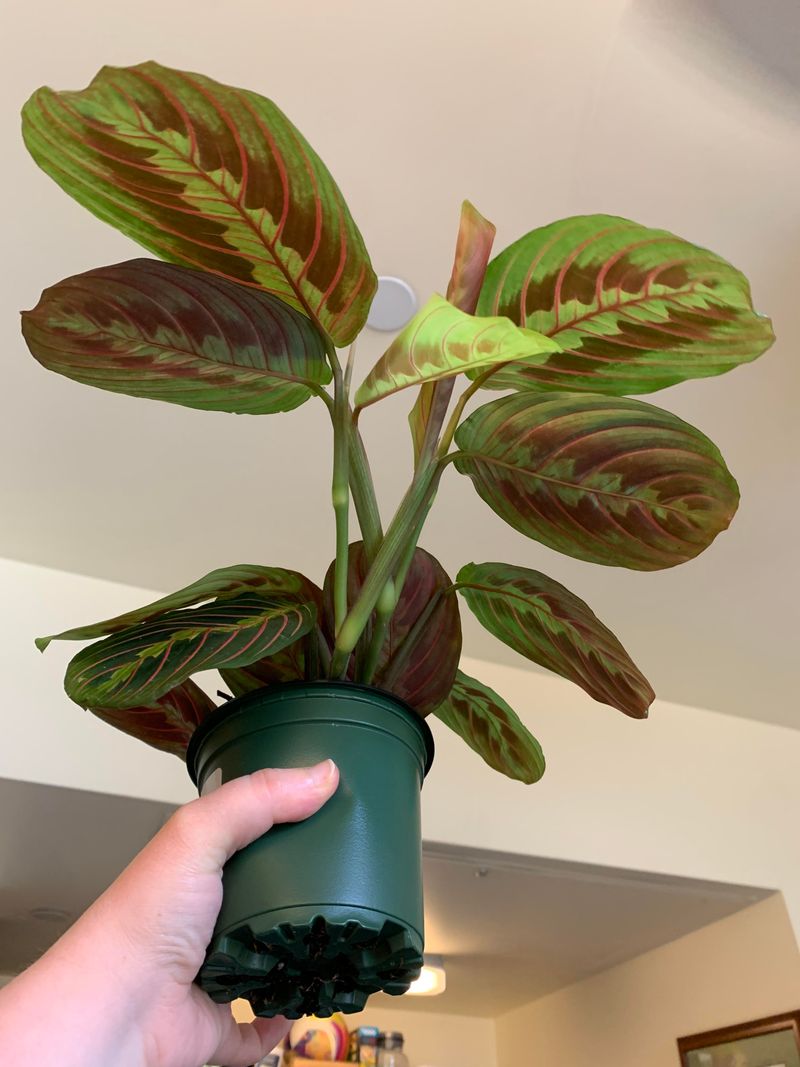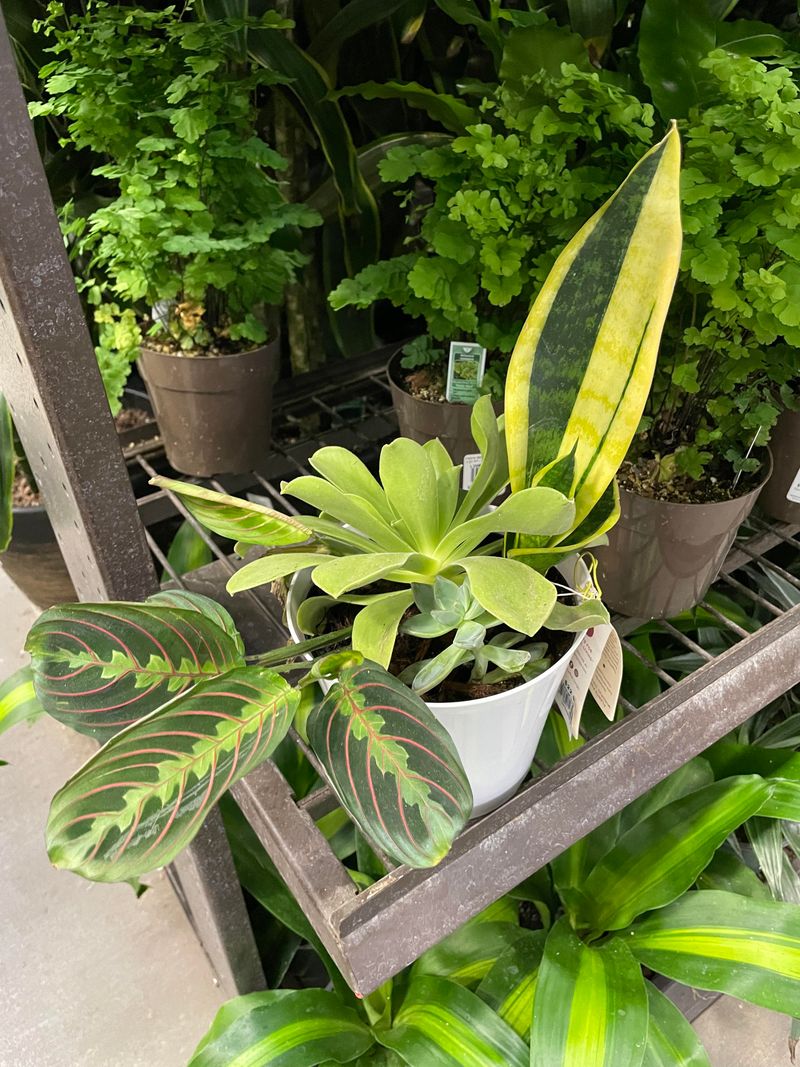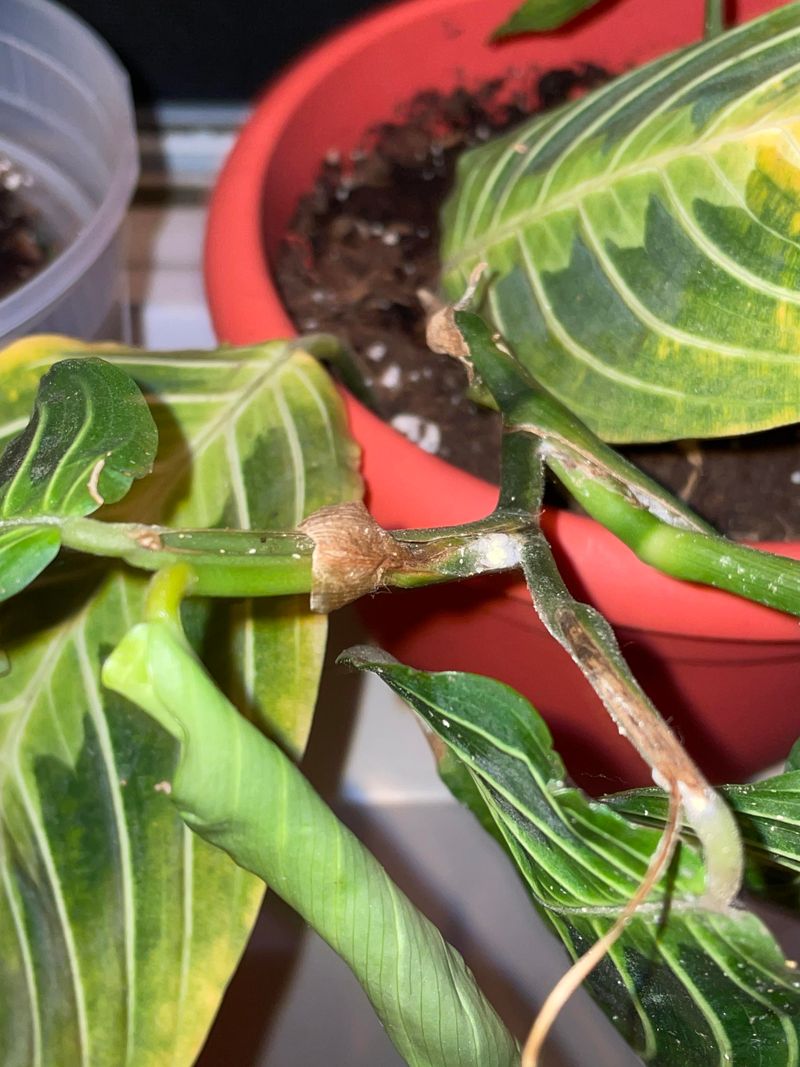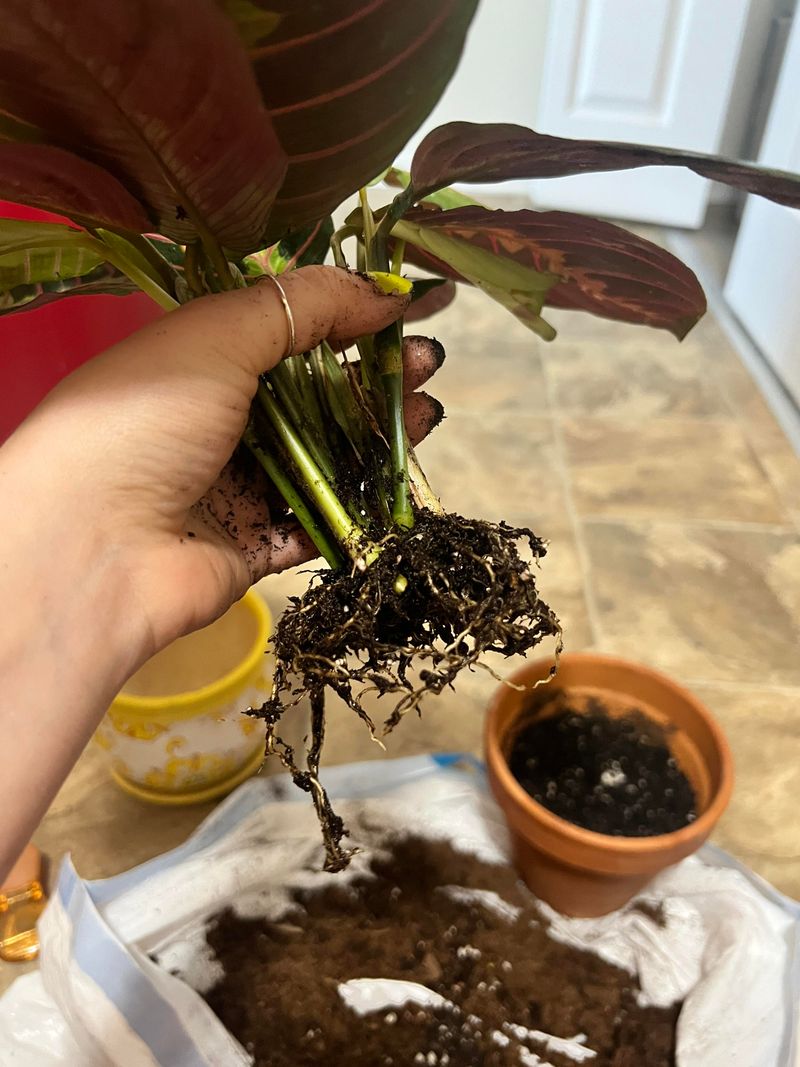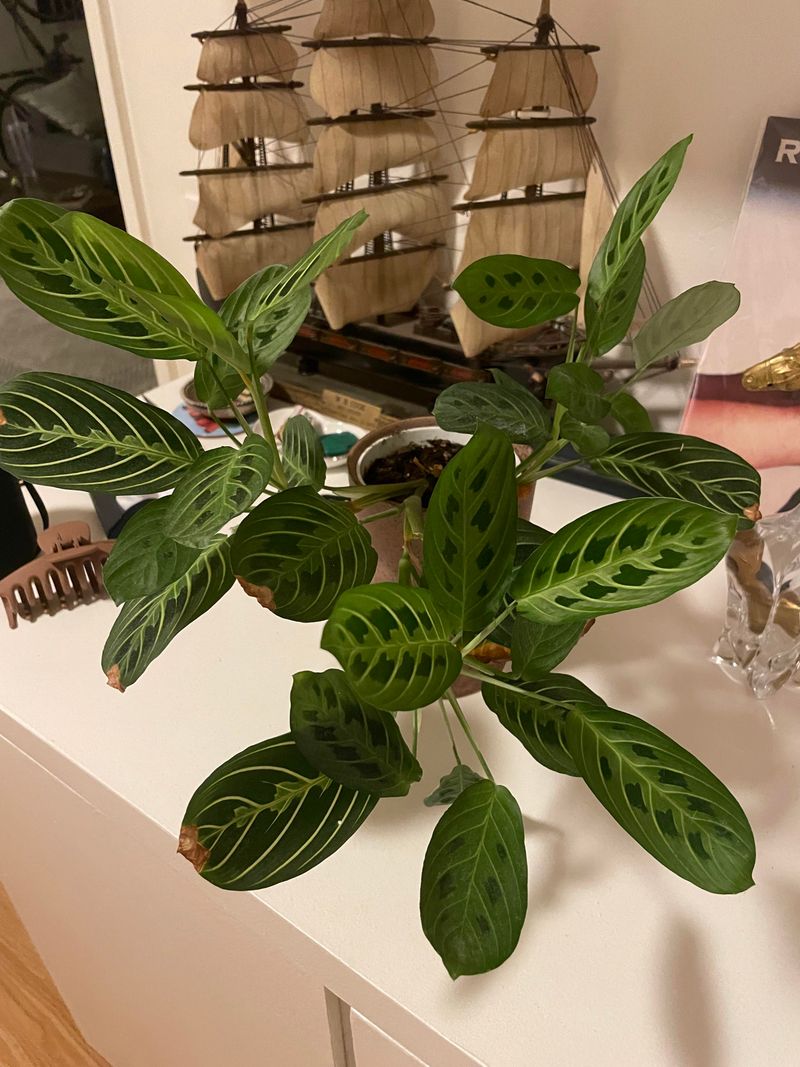Prayer plants are pure magic—they fold up their leaves at night like they’re saying a little bedtime prayer, and honestly, it never gets old. If you’ve fallen for their charm like I have, you’ll be happy to know they’re surprisingly easy to multiply.
I’ve tried just about every method out there, and some work way better than others. The best part? You can grow a whole little jungle from one plant with a few simple steps.
1. Water Propagation
Water propagation is a simple, effective method for growing new prayer plants. Begin by snipping a healthy stem cutting just below a leaf node, ensuring it’s about 4-6 inches long. Place it in a glass of water, making sure the node is submerged.
Find a sunny spot for your new cutting, but avoid direct sunlight to prevent leaf burn. Change the water every week to keep it fresh and encourage root growth.
Within a few weeks, you’ll notice roots sprouting. This method is not only educational but also offers a glimpse into the plant’s development process, making it perfect for young plant enthusiasts.
2. Soil Propagation
Soil propagation is another excellent way to grow prayer plants. Cut a healthy stem below a node and remove the lower leaves. Dip the cut end in rooting hormone to boost root development.
Plant the cutting in a pot filled with moist, well-draining soil. Keep the soil damp and maintain high humidity by covering the pot with a plastic bag.
Place the pot in indirect sunlight and wait patiently. In a few weeks, roots will develop, and new growth will emerge. Soil propagation mimics the plant’s natural environment, offering a hands-on gardening experience.
3. Division Method
Dividing a mature prayer plant is an effective way to multiply your greenery. Carefully remove the plant from its pot and shake off excess soil. Look for natural divisions or clumps within the root ball.
Gently pull apart these sections, ensuring each has roots attached. Replant each division in its own pot with fresh soil.
Water thoroughly and keep in a warm, humid spot. This method rejuvenates the parent plant and gives you multiple new plants. It’s ideal for those with an already flourishing prayer plant collection.
4. Leaf Cutting
Leaf cutting is a less common but fascinating propagation method. Select a healthy leaf with a small piece of stem attached. Cut the stem with a sharp, sterile tool.
Lay the cutting on a damp, well-draining soil mix, ensuring the stem is slightly buried. Cover with a plastic bag to maintain humidity.
Place in indirect light and keep the soil moist. It may take longer, but new shoots will eventually emerge from the base, showcasing the plant’s resilience and adaptability. This method offers a unique way to deepen your connection with your plants.
5. Humidity Dome
Using a humidity dome can significantly boost your propagation success rate. After planting your cutting in soil, place a clear plastic dome or bag over the pot. This creates a mini greenhouse, trapping moisture and warmth.
Check daily for condensation. If absent, mist the inside lightly. Ensure some air circulation to prevent mold.
This method accelerates root development and reduces stress on the cutting. It’s perfect for those seeking to create an optimal growing environment at home, especially in drier climates.
6. Healthy Leaf Selection
Choosing the right leaf is crucial for successful propagation. Opt for a vibrant, healthy leaf, free from blemishes or signs of disease. The healthier the leaf, the more likely it will root and thrive.
This selection process is essential for beginners and seasoned gardeners alike. It encourages a keen eye for plant health, fostering better overall care.
By investing time in selecting the best leaves, you ensure the strongest start for new plants. This step is foundational for any propagation method, setting the stage for thriving greenery.
7. Root Bound Benefits
Understanding when a prayer plant is root bound can be beneficial. As roots fill the pot, they signal it’s time for division or repotting.
This condition often enhances leaf growth as the plant focuses energy on foliage rather than expanding roots. It’s a natural indicator that propagation opportunities are ripe.
Recognizing this stage helps gardeners decide when to propagate or refresh their plants. It’s a practical skill that maximizes space and fosters healthier plants, enriching your gardening journey.
8. Rooting Hormone Use
Rooting hormone is a gardener’s secret weapon for successful propagation. Dust the cut end of your prayer plant stem before planting in soil. This step encourages faster, stronger root development.
It’s especially useful for beginners, offering a confidence boost as cuttings take root more reliably. While not always necessary, it enhances success rates.
Using rooting hormone is a simple way to increase your propagation prowess, ensuring each cutting has the best start possible. It’s an easy addition that makes a noticeable difference.
9. Optimum Moisture
Maintaining the right moisture level is crucial for prayer plant propagation. Soil that’s too wet can lead to rot, while dryness can stunt growth. Aim for soil that’s consistently damp but never waterlogged.
Watering should mimic the plant’s natural tropical environment, promoting healthy roots. Regularly check moisture levels, especially in more arid climates.
This practice ensures your cuttings develop strong, resilient roots. Mastering moisture management is essential for successful propagation, nurturing your love for these captivating plants.
10. Indirect Sunlight
Prayer plants flourish best in indirect light, making it ideal for propagation. Direct sunlight can scorch leaves, while too little light hampers growth.
Place your cuttings where they’ll receive bright, filtered light. This balance supports healthy photosynthesis, crucial for new roots and shoots.
Adjust the light conditions as needed, especially during seasonal changes. Understanding your plant’s lighting needs is key to a thriving propagation process and helps your indoor garden look its best.
11. Temperature Control
Keeping a consistent temperature is vital for propagation success. Aim for a warm environment, around 70-80°F, to mimic the plant’s tropical origins.
Sudden temperature drops can stress the plant, hampering root development. Ensure a steady warmth by avoiding cold drafts and extreme heat.
This stability encourages robust growth, supporting the plant’s transition from cutting to thriving plant. Temperature control is a simple yet effective way to enhance your propagation efforts, making it accessible for everyone.
12. Use of Grow Lights
Grow lights can provide the perfect boost for prayer plant propagation, especially in dim areas. These lights mimic natural sunlight, promoting healthy growth even in darker rooms.
Position the light about 12 inches above your plant, ensuring it’s not too close to prevent overheating. Adjust the duration to mimic natural day lengths.
This tool is invaluable during winter months or in north-facing rooms. Investing in a grow light can transform your indoor garden, keeping your plants happy year-round.
13. Regular Misting
Regular misting helps maintain the humidity levels prayer plants love. Use a spray bottle to lightly mist the leaves, especially in dry indoor environments.
This practice replicates the plant’s natural habitat, supporting lush foliage and healthy growth. Avoid over-misting to prevent fungal issues, and aim for morning misting to allow leaves to dry by evening.
Misting adds a refreshing touch to your plant care routine, fostering a deeper connection with your prayer plants while keeping them vibrant.
14. Patience and Observation
Patience and keen observation are key to successful propagation. Keep an eye on changes in color, growth rates, and overall health.
This attentiveness allows you to respond quickly to any issues, ensuring your cuttings have the best chance to thrive. Documenting progress can be rewarding and educational.
The process fosters patience and a deeper appreciation for nature’s pace, enriching your gardening practice. This approach transforms propagation into a mindful, fulfilling journey, teaching valuable lessons in persistence.
15. Re-potting Techniques
Proper re-potting techniques are essential once your prayer plant cutting outgrows its pot. Choose a slightly larger pot to give roots room to expand.
Gently tease out the roots if they’re compact and add fresh, well-draining soil. Water thoroughly to help the plant settle into its new home.
Re-potting invigorates your plant, encouraging robust growth. This step is crucial in maintaining the health and aesthetics of your growing prayer plant collection.
16. Companion Planting
Prayer plants thrive when paired with other tropical companions, like ferns or calatheas. This strategy mirrors their natural habitat, promoting a balanced ecosystem.
Companion planting enhances humidity and visual appeal, turning your indoor space into a vibrant jungle. It encourages biodiversity, benefiting all plants involved.
The synergy among plants fosters healthier growth, rewarding you with a lush, thriving collection. This approach adds diversity and vitality to your plant care routine, enriching your home with nature’s beauty.
17. Pest Control
Vigilant pest control protects your prayer plants from common invaders like spider mites and aphids. Regularly inspect leaves and stems, looking for tell-tale signs like webbing or sticky residue.
Use natural remedies, like neem oil, to combat pests effectively without harming your plants. Consistent care prevents infestations and promotes healthier growth.
This practice ensures your prayer plants remain vibrant and resilient, safeguarding your investment in their beauty. It’s an essential part of plant care that rewards with continuous, lush growth.
18. Nutrient-Rich Soil
Using nutrient-rich soil supports the long-term health of your prayer plants. A mix containing organic matter, like compost or peat, offers essential nutrients.
This soil type retains moisture while providing good drainage, balancing the plant’s needs. Occasional fertilizer during the growing season boosts growth and vibrancy.
Investing in quality soil is a foundational step that ensures lush, healthy prayer plants. It enhances the overall success of your propagation efforts, contributing to a thriving indoor jungle.
19. Propagation Journals
Keeping a propagation journal transforms your plant care into an enriching hobby. Documenting growth stages, successes, and challenges creates a valuable resource for future projects.
Sketches and notes personalize your journal, making it a creative outlet. It provides insights into what methods work best, guiding you toward more successful outcomes.
This practice enhances your understanding of prayer plants, turning each propagation attempt into a learning experience. It’s a rewarding way to deepen your connection with nature.
20. Seasonal Care Adjustments
Adapting care routines to the seasons boosts prayer plant vitality. More sunlight and water in summer, reduced watering in winter, align care with natural cycles.
Seasonal adjustments help plants cope with changing conditions, ensuring year-round health. Tracking these changes refines your skills and deepens your understanding of their needs.
This proactive approach keeps your prayer plants thriving, offering a dynamic plant care experience. Tailoring care to nature’s rhythms enriches your relationship with your greenery.

